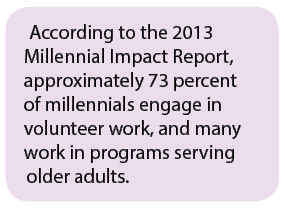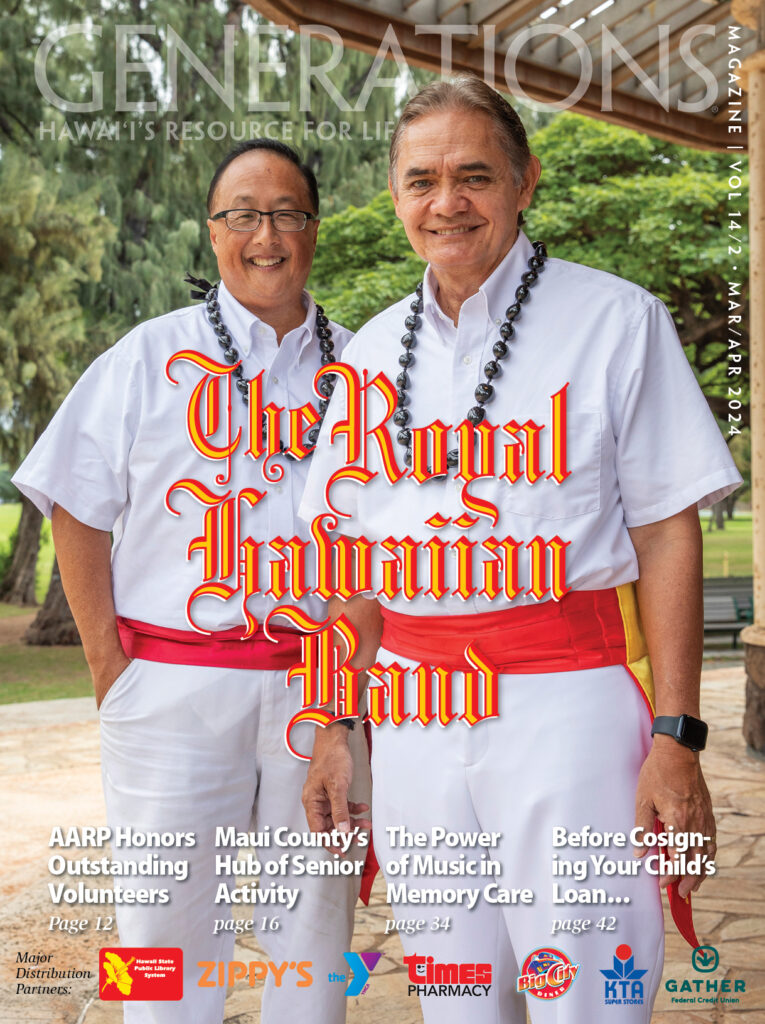The term “millennial” typically evokes certain images in our minds. Born between 1985 and 2004, millennials have been labeled the “Me Generation,” “Me, Me, Me Generation,” “Peter Pan Generation” and “Boomerang Generation.” These are far from complimentary.
Aside from reflecting re-verse ageism, such stereotypes divert attention from this generation’s unique potential for kūpuna care. Millennials differ from Generation X (born 1965–1984), baby boomers (born 1946–1964) and the Silent Generation (born 1925–1945). All generations differ from one other, stamped by the particular historical, social and cultural environments that characterized their formative years. Rather than belittle the traits specific to millennials, how can we take these traits into account to customize eldercare recruitment and training efforts and capitalize on the singular strengths of this generation?
All generations differ from one other, stamped by the particular historical, social and cultural environments that characterized their formative years. Rather than belittle the traits specific to millennials, how can we take these traits into account to customize eldercare recruitment and training efforts and capitalize on the singular strengths of this generation?
According to the 2013 Millennial Impact Report, 73 percent of millennials engaged in volunteer work in 2012. Many millennials work in programs for older adults. Some examples:
• They teach English to older immigrants and help them access health services as part of Project SHINE at Temple University.
• They provide appropriate home modifications in the Home Safety for Seniors Program, operated by the ManaTEEN Club in Bradenton, Fl.
• They do yard work and household repairs for the Our Folks Program in Groundwork Hudson Valley, New York.
• They provide companionship for older adults and respite for family caregivers as part of the Time Out Respite program at Temple University.
• They help elderly with low vision by shopping for and reading to them in the VISIONS Intergenerational Program in Selis Manor, New York.
• They instruct older adults on the use of technology in The Gerontechnology Program at Pace University, New York.
Of all age groups, millennials have been the one most studied. To effectively recruit millennial volunteers and optimize their work with older adults, what characteristics (of theirs) should agencies and organizations keep in mind? Millennials are:
Multi-taskers. They’re able to juggle many responsibilities at once but can be easily distracted. Their jobs should entail a variety of experiences and tasks; a supervisor should also set explicit daily and weekly goals to keep them on task.
Tech-savvy and connected to social media. Keep your website and social media, such as Facebook and Twitter, up-to-date and easily accessible. Avoid appearing archaic, which is a real turn-off for this generation. Use their technological skills to keep your organization in-the-know, and allow millennial volunteers freedom and opportunities to identify new, unanticipated technological contributions to the group.
Interested in work balance and flex schedules. It may be necessary to rethink traditional volunteer roles to accommodate such preferences, perhaps offering “short stints” or micro-ways of initial involvement that are time-limited, then offering a continuum of levels of involvement as they become more invested in their work.
Support causes, rather than organizations. The work should inspire them to continue. Frequent reinforcement of the relevance and impact of their contributions is essential. Research indicates that support for a given cause is the main reason millennials volunteer, followed by desire to connect with like-minded peers and develop skills and knowledge relevant to future career development.

